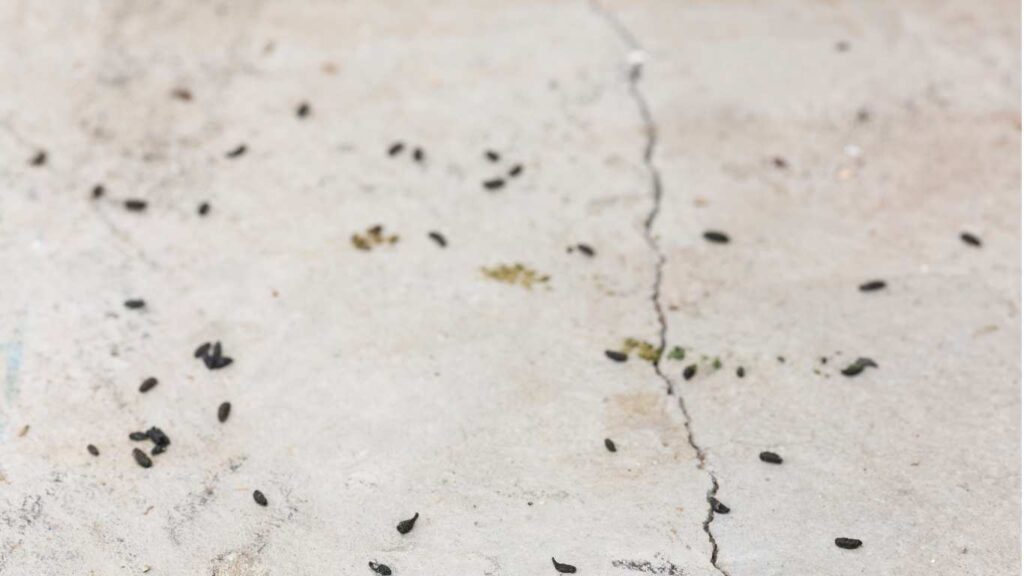Mice can be devastating to your home, so you need to know the signs. This guide explains 6 signs of mice you should definitely not ignore.
If you live in an older home or a home that has insulation problems, you may start to notice some odd things happening around your house.
Grease marks may appear on your walls, and you may notice some of your favorite crackers have been munched on. You might notice a musky smell, and scariest of all, you might hear scratching noises inside your walls at night.
If you notice any of these things happening, you don’t need to call an exorcist, but you might need to call a pest control company. All these things can be signs of mice living in your home.
Read on to learn more about these symptoms and the other clues that you could have a four-legged infestation.
1. Musky Smell
One of the telltale signs of mice living in your home is a distinctive, unpleasant odor. When mice move into your home, they’ll start leaving droppings and urine in your attic, walls, cabinets, and other dark, enclosed spaces. This mess can start to create a smell that lingers around your home.
The smell of mice is a pungent, musky sort of odor that may smell like a combination of urine and decay. You might start to notice this smell especially around your attic, cabinets, and corners of your home. And even if you can’t smell anything, any pets you have living in your home might act more excited or start sniffing at the walls.
2. Tooth Marks
Another classic sign that you have a mouse infestation is the sudden appearance of tooth marks around your home. Mice will forage in your home for food and nesting materials, and they aren’t picky about what they choose. Because they’re rodents, they also need to gnaw on hard surfaces like wood to keep their ever-growing teeth trimmed down.
You may start to notice the corners of your groceries are nibbled on, especially dry goods like pasta and cereal. Some of your clothes may have mysterious holes appear in them where a thrifty rodent has stolen the fabric for nesting material. You may even notice tooth marks on the edges of baseboards and door jambs where mice have chewed themselves little doorways.
3. Droppings
 If you suspect you have mice living in your home, you should keep an eye out for droppings. These will likely show up in mice’s favorite hidey-holes: cabinets, drawers, and attic spaces in particular. You may also see them in a basement or in pantries and closets.
If you suspect you have mice living in your home, you should keep an eye out for droppings. These will likely show up in mice’s favorite hidey-holes: cabinets, drawers, and attic spaces in particular. You may also see them in a basement or in pantries and closets.
Mouse droppings are small black pellets about the size of a grain of rice. They are oblong, and you’ll usually find them in groupings. If you come into contact with mouse droppings, be sure to wash your hands immediately and thoroughly, as mice can spread a variety of diseases through their feces.
4. Scratching Sounds
One of the more noticeable signs that you may have mice living in your home is a scratching sound in your walls. As mice move through your walls, you may hear their claws catching on the inside of your sheetrock or studs. You may also hear them chewing on the inside of your walls to gather nesting materials.
When they’re moving around in your walls, mice will likely sound a lot larger than they are. You may think you have squirrels or even raccoons living in your attic and walls. In any case, you need to call a pest control company if you hear scratching noises since it means something unpleasant has made its way into your home.
5. Mice Nests
 Aside from scratching sounds, you may start to find mouse nests once an infestation gets big enough. These nests are where the mice sleep and raise their young, and in general, they’re going to be in closed-off, safe locations. Many may be inside your walls, or you may find them in your attic.
Aside from scratching sounds, you may start to find mouse nests once an infestation gets big enough. These nests are where the mice sleep and raise their young, and in general, they’re going to be in closed-off, safe locations. Many may be inside your walls, or you may find them in your attic.
A mouse nest will consist of a pile of easy-to-shred materials, such as cardboard, paper, drywall lining, grass, and leaves. The mice will then line these nests with soft materials like fabric or feathers. If you see one of these nests, call pest control immediately; it could have live baby mice in it.
6. Live Mice
Of course, the final undeniable sign that you have mice living in your house is if you begin to see live mice. If you reach this point, you may have a serious infestation happening. Your mouse population has grown so large that they can no longer get by sneaking around in places where there are no humans; they have to venture forth for food and nesting materials.
You’re more likely to see live mice in the evening when they’re most active. You may see them running across your floors or lurking in your kitchen cabinets. They’re going to want to stick to dark, closed spaces away from humans, since, believe it or not, they’re more afraid of you than you are of them.
Learn More About the Signs of Mice
Having mice in your home can not only be disgusting and frightening, but it can also be dangerous. If you see any of the signs of mice we’ve discussed here, you need to call a pest control company immediately. They can help you get rid of your mice infestation, as well as finding and closing off the routes the mice used to get inside in the first place.
If you’d like to get help with your pest control issue, check out the rest of our site at Official Pest Prevention. We are a full-service residential and commercial pest control company dedicated to producing peace in your home. Contact us today and start getting rid of termites, bed bugs, mice, and other pests infesting your home.
Official Pest Prevention is equipped to handle any infestations you may have. Whether you live in a commercial area or a residential one, if you say hello to us, you’ll be saying goodbye to those pesky bugs.
If you have any questions at all about our highly-rated services, then please feel free to contact us. We’re always eager to help out.
Official Pest Prevention is a family-owned, licensed pest control company celebrating 20 years serving over 100,000 satisfied customers in five area codes throughout Northern and Central California. Starting with a few contacts, and only four full-time employees, our small company has grown into an organization that today employs over 100 people, maintains a fleet of 75 vehicles, and has serviced over 100,000 Northern California households. This tremendous growth has come from loyal customers, who have recommended our work to their friends, family, and neighbors.
We are a full-service pest control company. Whatever your pest problem, we have a solution. Our goal is to make your property pest-free. Guaranteed. Contact us online or by phone (877) 711 2847 – for immediate assistance. Same-day bookings and flexible payment plans available – because pest invasions wait for no one.



